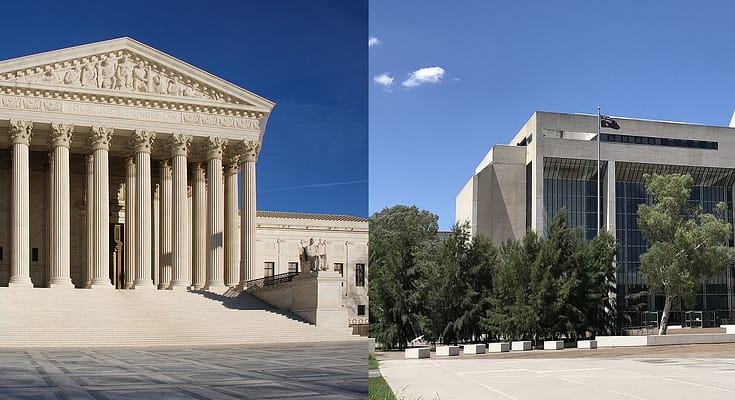The Australian National University College of Law has released a sneak peek at an upcoming virtual exhibition of student work. The online display shows off some innovative assessment and teaching resources that you might use in your own classroom.
‘Hold on’, you might say. ‘When does law school assessment ever result in an online exhibition?’ It does when a law teacher offers the opportunity for students to explore the themes of a course in the format they think will get their ideas across best.
Comparative courts
Associate Professor Heather Roberts co-convenes a course in comparative US-Australian law with Professor Heather Elliot at the University of Alabama. In the past two years, the course focused on the US Supreme Court and the High Court of Australia. The course looked at the history, jurisdiction, the benches of the two courts, and their place in popular culture.
I wrote an earlier blog entry on the development of the course.
The course encouraged students to present their final piece of assessment on a comparative theme in any way they wanted. But they needed to engage with a comparative issue and take into account the needs of their prospective audience.
Resources and how-to guides on different presentation methods underpinned the course assessment. But, just as importantly, students had a marking rubric that was clear and flexible enough to cater to a range of different approaches.
How does it fit into the curriculum?
The learning outcomes for Australian law degrees expects students to have an understanding of the law. But they must also be able to communicate it.
TLO2: Graduates of the Bachelor of Laws will be able to … communicate in ways that are effective, appropriate and persuasive for legal and non-legal audiences
Challenging students to communicate complex ideas to a diverse audience presents an opportunity for them to show their progress against this outcome.
But it goes slightly more in-depth than that. As Roberts points out in talking about the upcoming launch of the exhibition:
[I]t’s also critical to the ideas that underpin the community’s relationship with our legal system. Making information about the courts, and how they operate, easily accessible to the community promotes a better understanding of their critical role.
Teaching resources
Students produced an incredibly diverse array of materials. Some created magazines, websites and podcasts. Some made children’s books with teaching resources to support their use in elementary or secondary classrooms. And they weren’t confined to academic topics. Issues like individual judges in popular culture (e.g. the notorious RBG) and what the courts’ architecture says about their role also come in for attention.
And while the assessment task was an assessment, its also producing dividends. And its building the visibility of students’work – something I wrote about before. Some of the resources are designed for use in schools. Others have multi-disciplinary value.
Or follow this link: https://apexcourtsanu.wordpress.com




